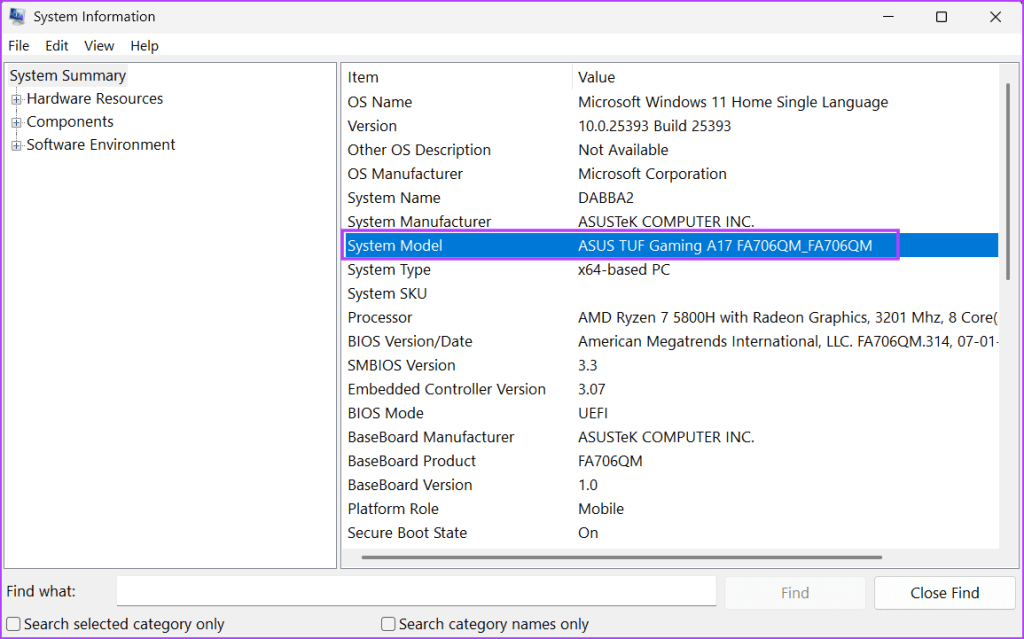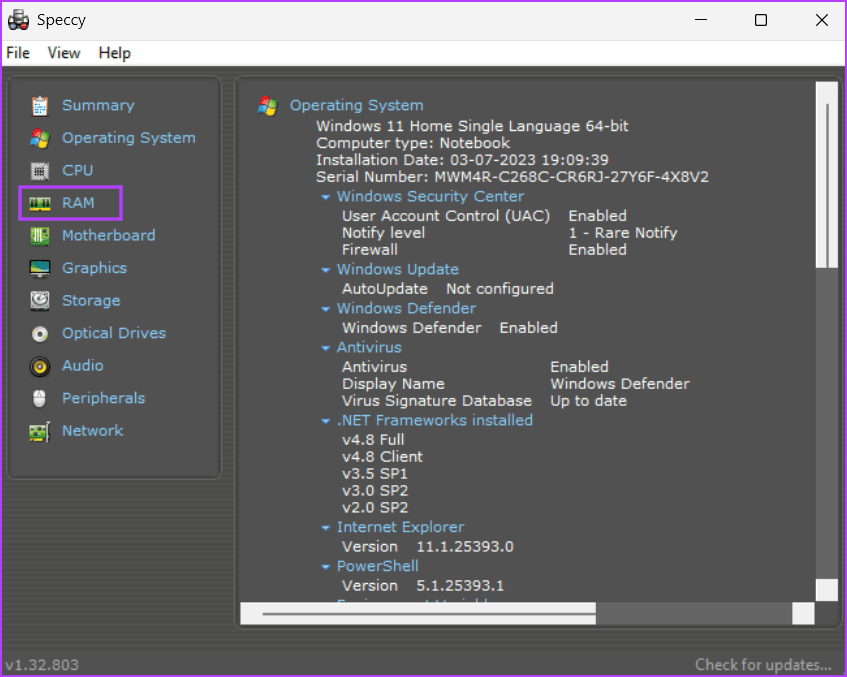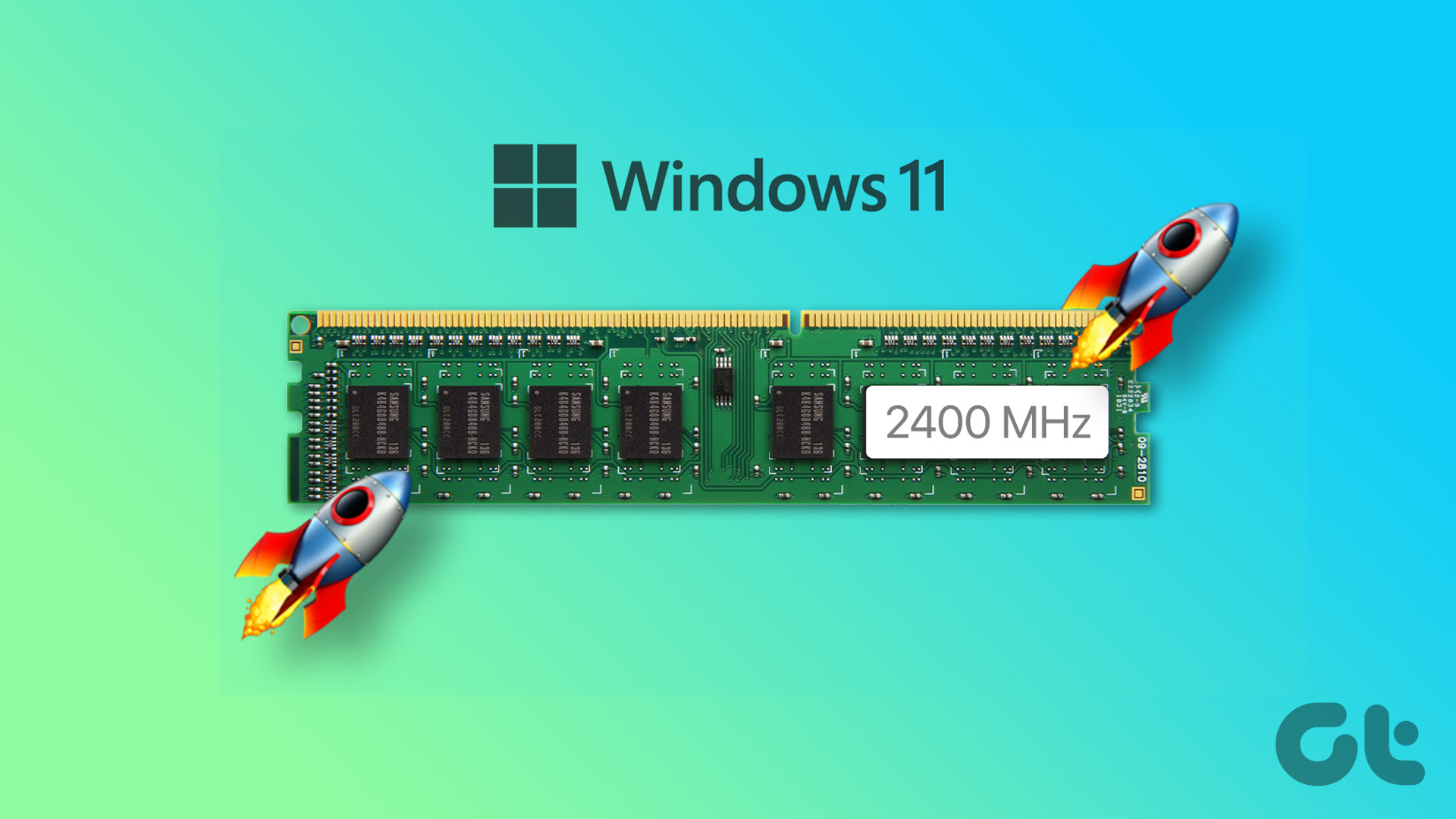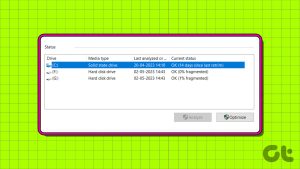Whenever you try to upgrade or add more RAM to your PC, you start looking for the RAM type supported by your PC. However, it isn’t as easy as viewing the amount of available RAM on your PC because Windows doesn’t display it in the System Information app or the About page in the Settings app.

But multiple methods exist to check RAM type in Windows 10 and Windows 11. Try out these five methods to check whether it supports DDR3, DDR4 RAM, or any other RAM type. Let’s begin.
1. Check the PC or Laptop Model From the Manufacturer’s Site
If you use a pre-built rig from an PC maker or have a laptop, the first course of action must be checking its manufacturer’s website for product details. You will surely find the RAM size, type, and more details listed on the product specifications page.
However, if your PC (desktop or laptop) is slightly old and you don’t have its model number, you can use the System Information app to check the model number of your PC. Here’s how:
Step 1: Press the Windows key to open the Start menu. Type Sysinfo in the search box and press Enter.

Step 2: The System Information app will launch. You need to locate the System Model entry in the list. It will contain the model name of your laptop.
Step 3: Click on the System Model entry to select it. Press the Control + C keyboard shortcut to copy the entry.

Step 4: Press the Windows key to open the Start menu. Type Edge in the search box and press Enter.

Step 5: Go to the address bar and paste the copied System Model entry. Press Enter to search for it.

Step 6: Click on the relevant search result and look for the technical specs page of the product to find the RAM type.

2. Using Task Manager
If you cannot find the system model name and number, you can use Task Manager to check the RAM type of a Windows 10 or 11 PC. However, this method can only display the RAM details of DDR3 or older memory. If you have DDR4 RAM installed, it won’t show the RAM type. Here’s how to do it:
Step 1: Press the Control + Shift + Esc keyboard shortcut simultaneously to open the Task Manager.
Step 2: Switch to the Performance tab.

Step 3: Click on the Memory option.

Step 4: In the top-right corner, there’s a mention of memory with RAM size. If your RAM is DDR4, you will only see the size under that column.

However, if your RAM is DDR3, you will also see the RAM type.

3. Using Command Prompt
If you want to find out what kind of RAM your PC has, you can use the Command Prompt. It will display the number instead of simply stating DDR3 or DDR4. Here’s how to do it:
Step 1: Press the Windows key to open the Start menu. Type cmd in the search box and press Enter to open Command Prompt in the Terminal app.

Step 2: Now, type the following command in the terminal and press Enter to execute it:
wmic memorychip get SMBIOSMemoryType
Step 3: The command will output numbers. In our case, it is 26, which denotes that our PC has a DDR4 RAM installed. If you see the number 24, it means that you have DDR3 RAM.
Step 4: Close the Terminal app.
4. Using PowerShell
Like the Command Prompt method, you can also know if the RAM is DDR3, DDR4, or any other version by using the Get-CimInstance cmdlet in PowerShell. But this method will also display a number instead of a simple text like DDR3 or DDR4 as the output. Repeat the following steps:
Step 1: Press the Windows key to open the Start menu, type PowerShell in the search box and press Enter.

Step 2: PowerShell will launch in a new tab in the Terminal app.
Step 3: Type the following command in the terminal and press Enter to execute it:
Get-CimInstance -ClassName Win32_PhysicalMemory | Format-Table SMBIOSMemoryType
Step 4: The command will output a number. In our case, it shows 26 because we have DDR4 memory. You might see another number if you have DDR3 or older memory.
5. Using a Third-Party App
If you don’t want to spend time searching for your RAM type or find the Command Prompt or PowerShell route complicated, you can use a third-party app instead. It will present all the information related to each of the components (CPU, RAM, GPU, and more) in an easy-to-understand manner.
You can use Speccy or CPU-Z to check the RAM type in a PC on Windows 11 or older OS with minimal effort. Here’s how to do it using Speccy:
Step 1: Download Speccy.
Step 2: Press the Windows + E keyboard shortcut to open the File Explorer.
Step 3: Navigate to the Downloads folder and double-click to run the setup file.
Step 4: Follow the on-screen instructions to install Speccy on your PC.

Step 5: Click on the Run Speccy button.

Step 6: Wait for the app to analyze all the hardware components present in your PC. Click on the RAM option in the left-side menu.

Step 7: It will display all the RAM details, including its type, size, frequency, and usage.

Step 8: Close Speccy.
Check RAM Type in a Jiffy
These were the five methods to check RAM type in Windows 10 or Windows 11. The Task Manager method only works for DDR3 or older memory. However, the rest of the methods work for DDR4 RAM as well. If you prefer a GUI-based program to display the RAM type, use Speccy or CPU-Z.
Was this helpful?
Last updated on 29 August, 2023
The article above may contain affiliate links which help support Guiding Tech. The content remains unbiased and authentic and will never affect our editorial integrity.










